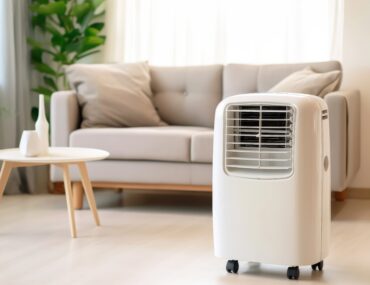When the heat kicks in, staying hydrated becomes a lot more important — and sometimes, a bit more challenging. Whether you’re outdoors, stuck in traffic, or just going about your day, hot weather can leave you feeling drained faster than you think.
Dehydration doesn’t always hit you suddenly. It can sneak up slowly — starting with tiredness, dry lips, or a headache. And the truth is, by the time you feel really thirsty, you’re probably already a little dehydrated.
In this blog, we’ll go over practical, no-nonsense ways to keep your hydration levels in check during summer. No fancy tricks — just helpful reminders based on science and experience.
1. Water First, Always
This one’s obvious, but it’s still worth saying: water is your best bet. It’s the most direct and effective way to hydrate. Aim to drink small amounts consistently throughout the day rather than chugging a full bottle once you feel thirsty.
You can track your intake with a water bottle that has time markers or just make a habit of drinking a glass when you wake up, before meals, and in between activities.
Adult men need about 3.7 litres and women about 2.7 litres of fluids a day — including water, food, and other drinks.
2. Know the Signs of Dehydration
It helps to know what dehydration actually looks like. It’s not just about thirst. You might notice:
- Dry mouth or lips
- Headache
- Fatigue
- Dizziness
- Less frequent urination
- Dark yellow urine
If you start feeling any of these, it’s a signal to drink water and slow down a bit. In more serious cases — like heatstroke or heat exhaustion — symptoms can include confusion, rapid pulse, or nausea. In those situations, it’s best to seek medical help.
3. Eat Water-Rich Foods
You don’t have to rely on drinks alone. Many fruits and vegetables have high water content and can help you stay hydrated.
Some top choices include:
- Watermelon
- Cucumber
- Strawberries
- Tomatoes
- Lettuce
- Zucchini
- Oranges
These foods not only hydrate you, but also give you fibre, vitamins, and a break from the heaviness of cooked meals. They’re especially refreshing when chilled.
Healthline offers a longer list of hydrating foods if you want to mix things up.
4. Don’t Wait Until You’re Thirsty
Thirst is a late sign. If you only drink when you’re thirsty, you’re playing catch-up. Try building it into your routine: a glass first thing in the morning, one before every meal, and a refill during work or errands.
Set phone reminders if you tend to forget. Keep a bottle visible at your desk, in your bag, or in the car.
5. Be Careful with Caffeine and Alcohol
While a morning coffee or an evening drink might be part of your routine, both caffeine and alcohol can have a dehydrating effect. That doesn’t mean you have to skip them altogether — just balance things out with extra water.
If you’re having a coffee, pair it with a glass of water. Same goes for wine, beer, or cocktails. Make hydration part of the plan, not an afterthought.
6. Dress for the Heat
What you wear can make a difference in how much you sweat — and how much water you lose. Light, breathable fabrics like cotton or linen help your body regulate its temperature better.
Stick to lighter colours when you’re outside, and avoid tight, heavy clothes. If you’re exercising, moisture-wicking clothes can help keep you cool.
7. Use Electrolytes Wisely
If you’re sweating a lot — whether it’s due to exercise, outdoor work, or just intense heat — you may need more than water. That’s where electrolytes (like sodium, potassium, and magnesium) come in.
You can get electrolytes from certain drinks, tablets, or even foods like bananas, coconut water, and yogurt. Just be mindful of sugar content in store-bought sports drinks. Sometimes water plus a salty snack does the job just fine.
8. Hydrate According to Activity
If you’re sitting at a desk most of the day in an air-conditioned room, your hydration needs are different from someone working outdoors or running errands in the sun.
Adjust your intake based on what you’re doing. And remember, just because you’re indoors doesn’t mean you’re exempt — air conditioning can also dry you out.
9. Flavour Your Water if You Need To
If you’re someone who struggles with plain water, that’s okay. Try infusing it with natural flavours: slices of lemon, cucumber, mint, or berries can make a big difference.
Avoid sugary flavour packets or sodas — they may add more sugar than you realise. The goal is to make water more appealing, not to replace it with something else.
10. Make It a Habit, Not a Chore
Hydration shouldn’t feel like another task on your to-do list. The more you integrate it into your daily rhythm, the easier it gets. Carry a water bottle you actually like. Add hydration breaks into your routine the same way you take coffee breaks.
Treat water as part of your day, just like meals or rest.
Stay Hydrated!
Staying hydrated during summer isn’t just about drinking more water. It’s about being aware of how your body reacts to heat and making small, steady choices to support it.
Start your day with a glass of water. Eat fruits and vegetables that help. Listen to your body, and don’t wait for thirst to remind you.
Whether you’re out in the sun or working indoors, hydration matters. Keep it simple, stay consistent, and you’ll feel the difference.


